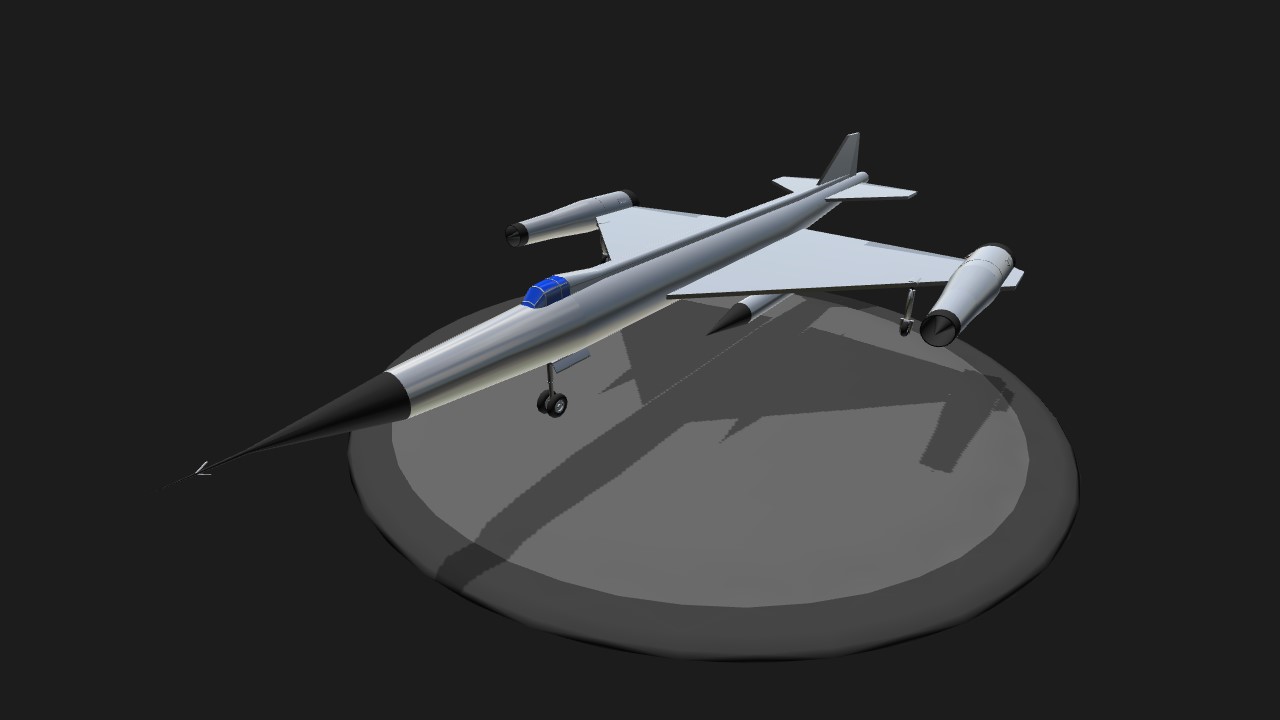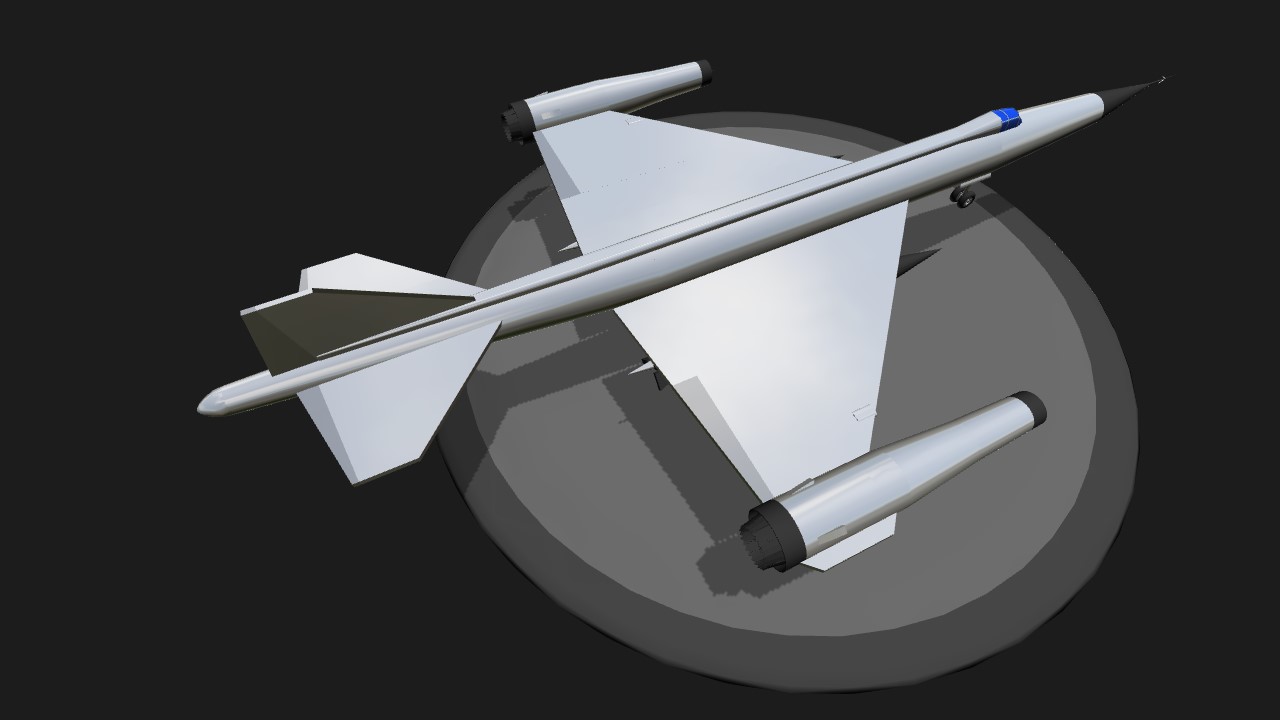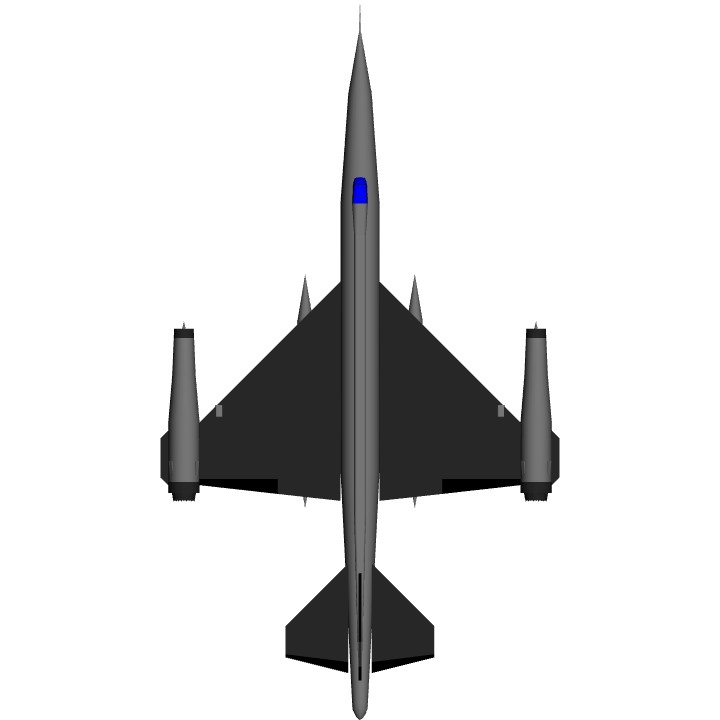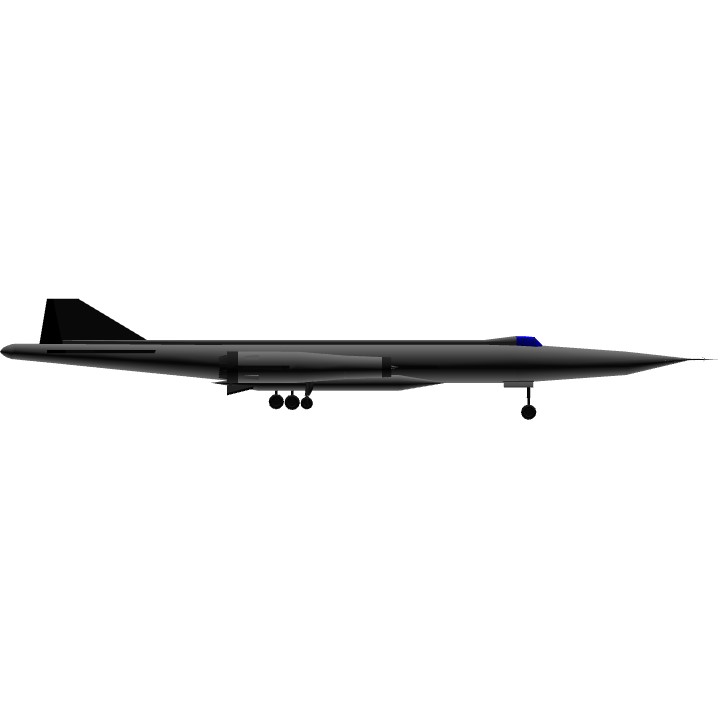You might need some trim to fly level, because this airplane produces a lot of lift.
AG-1 main brake parachute.
AG-2 release drop tanks.
History:
Originally the RSR was to be a long-range thermonuclear bomb platform, but was changed to reconnaissance because of size problems. In 1960 the RSR underwent a long redesign stage. The airframe was restressed to enable the aircraft to make a barrel roll to 137,800 ft so it could avoid surface-to-air missiles. The wings were redesigned with eight instead of five major forged and machine ribs between the root and the engine. The wing trailing edge was tapered more sharply, and an area was maintained by adding a short section (virtually a strake) outboard of the engine. These extensions had a sharp-edged trapezoidal profile. The main landing gear was redesigned as a four-wheel bogie with 750 x 250mm tires, and the hydraulically extended skies were replaced by retracting single-wheel gears under the outer wings. Unfortunately, the Soloviev D-21 turbofans never became available, and had to be replaced by plain afterburning turbojets. The choice fell on the mass-produced Tumanskii R-11F, each raged at 8,686 lb dry and 12,676 lb with afterburner. These were installed in longer and slimmer nacelles, with inlet sliding centrebodies pointing straight ahead instead of angled downwards.
There is no reason to doubt that the pre-series RSR, designated R-020, would have performed as advertised. It suffered from a Kremlin captivated by ICBMs and space, which took so much money that important aircraft programmes were abandonded.
Specifications
General Characteristics
- Created On iOS
- Wingspan 41.6ft (12.7m)
- Length 75.5ft (23.0m)
- Height 12.6ft (3.8m)
- Empty Weight 15,328lbs (6,952kg)
- Loaded Weight 31,464lbs (14,272kg)
Performance
- Power/Weight Ratio 2.142
- Wing Loading 52.9lbs/ft2 (258.4kg/m2)
- Wing Area 594.4ft2 (55.2m2)
- Drag Points 5856
Parts
- Number of Parts 78
- Control Surfaces 5
- Performance Cost 554






